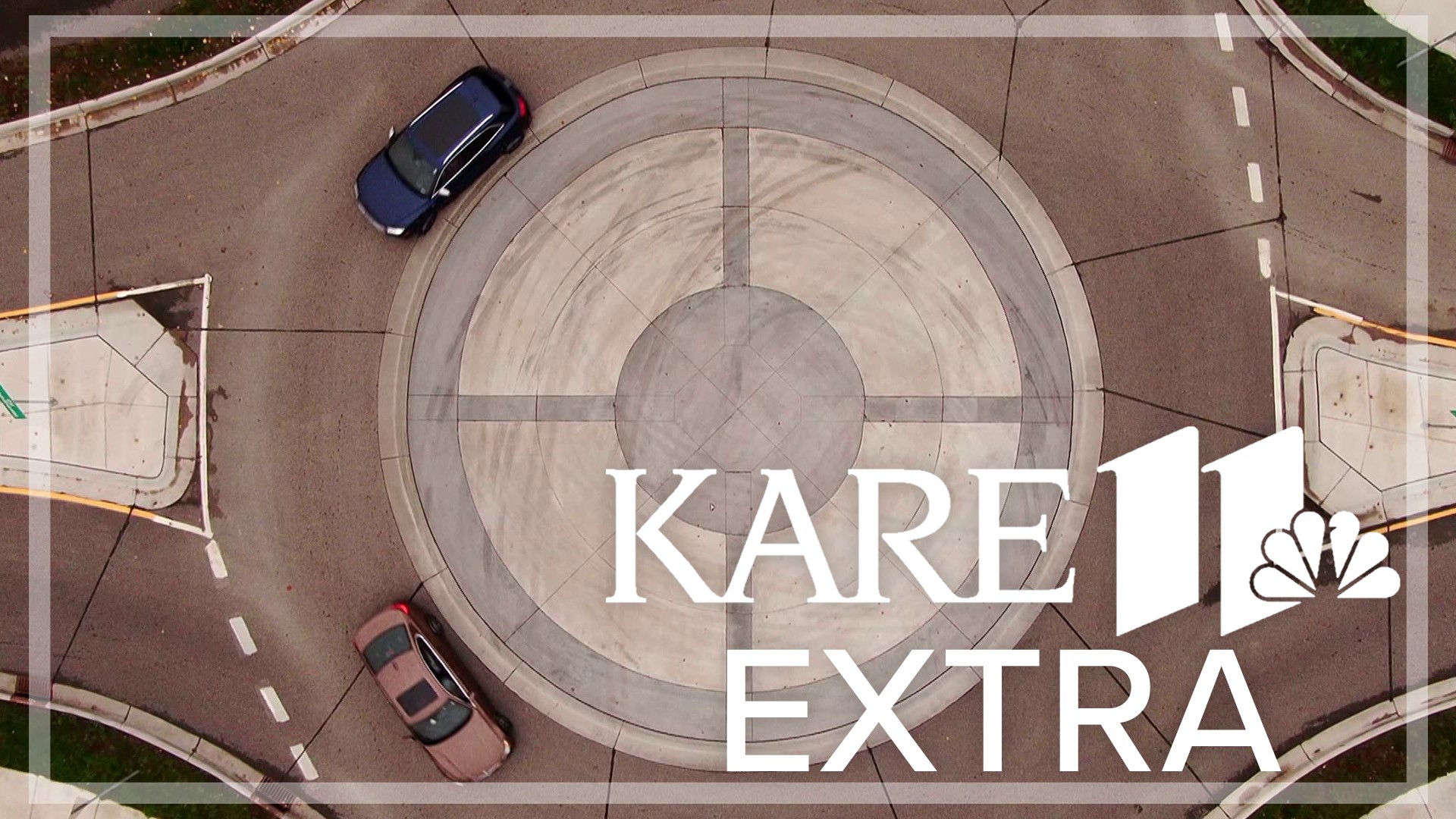MINNESOTA, USA — Your eyes and wheels don't deceive you; you're seeing more circles.
“Just recently, there's been a kind of almost a cascade of more roundabouts every single year,” said Minnesota Department of Transportation administrative engineer Derek Leuer.
MnDOT's first roundabouts went up in 2002, down in Medford off of Interstate 35. According to a national roundabout database (yes, there is such a thing), Minnesota now has 498.
And the reason behind the rise has nothing to do with trying to annoy you.
“The biggest thing when we looked at the research is the really big reduction in fatal and serious injury crashes, which is really the target type of crash we want to reduce,” said Leuer. “After we install a roundabout, we typically see an 80- to 90-percent reduction in fatal and serious injury crashes, versus the before conditions,” he adds.
MnDOT said they are up to 70-percent safer for pedestrians, too. But how?
Well, by design, they force drivers to slow down and they take out those right angles that a four-way stop, or signaled intersection have — both things that make crashes far more severe.
And the way the crosswalks are designed means pedestrians only need to cross one lane of traffic at a time. The suburbs must have been reading the same studies.
“We have six, full-size, or standard-size, roundabouts in Edina, and we have four what we call mini-roundabouts,” explained Chad Millner, director of engineering for the city of Edina.
For Edina, the reasons weren't strictly about safety. Officials say roundabouts help move traffic through congested intersections better, so they've put a few near schools.
“Eventually they learn that it is better for me to just yield and go through these from a traffic operations standpoint, then having a four-way stop that was here. Before, you'd have cars backed all the way up to Vernon Avenue in each direction in these school pickup and drop-offs,” says Millner.
But let's just admit that change is hard, and for most of us when we learned to drive, roundabouts weren't, well, around.
“Usually when you put one in, the first few weeks you get the calls like, 'Why did you do it?' 'I don't like the size of this one,' 'Can you do something different?' 'I don't know how to operate it,'” Millner said.
That's changing, too. According to Minnesota's Department of Public Safety, roundabouts ARE covered in the driver's manual for new drivers. And there are a few locations around the state that have roundabouts on the road test. DPS said as more roundabouts are built, they'll likely expand testing. For the rest of us, maybe a quick lesson would be helpful.
"You always yield to the person that is already in the circle,” said Andrew Plowman, senior project manager at WSB..
Andrew Plowman knows what he’s talking about. He's designed more than his fair share of roundabouts over the years. From minis to urban compact, single lane to multi-lane, too. But no matter the size, they all work the same.
“When there's a gap in traffic, and that means they feel they have enough time to get in, then they would enter and proceed to their final destination and exit, and as they exit, look for a pedestrian in the crossing,” said Plowman.
It's that simple. Slow down, yield to the cars already in the circle, turn right, proceed to your exit, and exit. When you approach a two-lane roundabout, it’s the same concept.
From the right lane, you can turn right at the first exit or go straight. Use the inside or left lane to go straight, or if you're going all the way around to the last exit, like if you were making a left turn at a traditional intersection.
The signage helps make it clear, but do you need to use your turn signal? Andrew said it's a big debate in the roundabout industry, but according to our statutes here in Minnesota, the answer is no. The distance between where you enter and exit is so short, it doesn't really matter.
"Number one, even when I'm sitting at a regular intersection, I don't necessarily trust someone's signal. Number two, it's fractions of a second before you're going to know if they are turning or exiting,” Plowman said.
While it may be the case that many drivers are not familiar with roundabout rules, they still seem to be working. And they're kind of growing on people.
Mostly. Maybe. Well, anyway, get used to them because they're sticking around.
“Just keep an open mind. They're not a fad anymore, even if they were at the beginning. It's a proven tool that does work for municipalities, counties, DOT and they're pretty much here to stay,” said Plowman.
WATCH MORE ON KARE 11+
Download the free KARE 11+ app for Roku, Fire TV, Apple TV and other smart TV platforms to watch more from KARE 11 anytime! The KARE 11+ app includes live streams of all of KARE 11's newscasts. You'll also find on-demand replays of newscasts; the latest from KARE 11 Investigates, Breaking the News and the Land of 10,000 Stories; exclusive programs like Verify and HeartThreads; and Minnesota sports talk from our partners at Locked On Minnesota.
- Add KARE 11+ on Roku here or by searching for KARE 11 in the Roku Channel Store.
- Add KARE 11+ on Fire TV here or by searching for KARE 11 in the Amazon App Store.
- Learn more about the KARE 11+ app for Apple TV in the Apple App Store.
- Learn more about KARE 11+ here.
Watch more local news:
Watch the latest local news from the Twin Cities and across Minnesota in our YouTube playlist:

